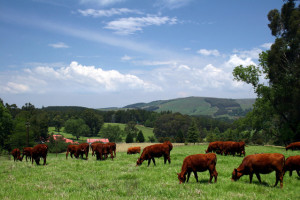African countries haven’t seen an increase in farm productivity that Asia has experienced in the past 30 years. The problem is that domestic expenditure on agriculture has for the most part been ignored, leaving crop yield at the same levels as the 1980’s. Africa’s population is on the rise, thus reducing Africa’s dependence on imports. This is because dependence on imports will be imperative, if Africa is to compete on a global scale. Empowering rural farmers via effective and labor intensive farming is a more permanent solution other than shipping in food from other better, developed agricultural centers. Nearly 2/3 of Africans depend on agriculture for their income, thus focusing on agriculture would set in place reinforcing feedback loops. This article seeks to discuss some of the main African farming solutions that could be implemented to curb the farming problems experienced by the continent as a whole.
6. Farmer education and agricultural extension
Most farmers in rural areas lack the recent up-to-date information on how to grow food resourcefully and economically. Providing them with physical resources necessary for implementation, coupled with their knowledge of the new technologies and techniques, can increase the farmers’ level of productivity drastically. This method rather emphasizes farmer education in technologies and methods that don’t have an adverse negative effect on water, soil, and air quality. Farmer education will:
- Increase availability of local food
- Increase farmers’ income
- Increase the sustainability of agricultural practices
5. Dairy Hubs
Dairy hubs are a link from small-scale farmers to dairy processors, reducing costs, and putting money back into local communities. Farmers are able to gain higher income, education, and healthier animals through this model; while increasing the production of safe and affordable milk in African countries. These hubs have previously had success in Pakistan and Bangladesh and are being trialed in Africa.
4. New Feeding System
This is a new way of feeding animals which entails weighing and blending all foodstuffs into a complete rotation, and ensuring that all animals’ nutrients are met. This system has been discovered to decrease labor costs, increase animal health, while at the same time giving farmers greater flexibility with feeding ingredients. When all these factors are combined, farm profitability increases by reducing feeding expenses which comprise of 60-70% total farm costs.
3. Fertilizer Deep Placement
Fertilizer deep placement is a new method of distributing fertilizer which increases smallholder yield by approximately 18% and decreases fertilizer use by 1/3. Traditionally, rural farmers normally apply fertilizer to crops by spreading the seeds by hand method. The FDP method works by using a special fertilizer (briquette) which emits nitrogen in stages. This fertilizer is positioned 7-10 centimeters below the soil, thus allowing less nitrogen to be lost through run-off. This method is used by farmers across Nigeria, Niger, and Burkina Faso.
2. Mobile Apps
The use of mobile apps in this recent era could be of great help to farmers who are tech savvy. A certain mobile app called (Vet Africa) is currently assisting farmers and animal health workers to accurately analyze livestock illness and diagnose the right and most effective drugs to curb the disease.
1. High-roofed green houses
Green houses with roofs of 12 feet and above have shown to double farm yields.
